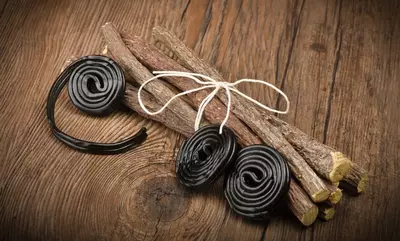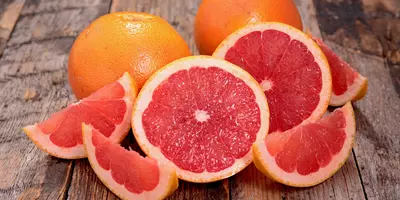Is Raw Food Good for Dogs?
- 09 Dec 2019
- 6m read

Raw dog food has become quite a trend in recent years and is seen by its supporters as a more natural way to do things. Raw advocates assert that before they befriended humans, wild dogs ate uncooked meat that they hunted or scavenged.
It's said that BARF dog food (Bones and Raw Food or Biologically Appropriate Raw Food) can do everything from increasing muscle strength to improving overall vitality. So you can see why this approach to pet nutrition is tempting.
So is BARF just a fad or is it worth trying? And how does it measure up against Butternut Box?
What is Raw Dog Food?
Raw food is…you guessed it. Dog food that is served up raw. This most often includes meat (including the bones), fruit, vegetables and sometimes dairy or poultry products, that are ground-up into patties.
It is supposed to mimic the food that a dog might have eaten in years gone by when they weren’t domesticated. For this reason, it is considered one of the healthiest diets to feed your dog, but can also be the most dangerous. The bacteria that is found in some raw meat can put you and your pooch at risk of things like salmonella.
Butternut Box vs Raw Food
At Butternut Box, the freshly prepared ingredients used in our recipes are gently cooked at 90 degrees. This kills off any bacteria that could be lurking whilst keeping all of the nutrients intact. The soft texture of our food also means it is easy for your pooch to chow down on, so you don't need to worry about choking.
Our meals are made using human-quality meat, vegetables, lentils, vitamins and minerals. So our Chicken You Out recipe, for example, balances 60% quality cuts of chicken with 40% veg, lentils and minerals. No bones and no nasties.
They’re also easier to digest (roughly 85.1% digestibility) than raw dog food (around 83.6% digestibility) according to our own internal studies.
No upset tummies on our watch.
Benefits of Raw Dog Food
Promotes strong bones and joints
As raw dog food contains bones, your dog will benefit from the huge volumes of calcium, magnesium and phosphorus contained within them. If these nutrients are consistently catered for in a dog's diet they can help prevent bone-related issues later on in a pooches' life, including arthritis and osteoporosis.
Strengthened immune system
As there are no cooking processes involved in feeding a raw diet, your dog will absorb all of the possible nutrients the food sources can offer, helping to boost their immune system. However, due to the risk of bacteria in raw food, it is likely that your pooch’s body could, at some point, find itself trying to fight off some of this bacteria. Whilst this might strengthen their immune system in the long run, it can cause unpleasant symptoms initially.
Healthier skin and coat
Because of the high protein and fat content in raw dog food, it is believed to be highly beneficial for the promotion of healthy skin and coat.
Negatives of Raw Dog Food
Bacteria
This hazard is two-fold, it isn't just four-legged family members who can become ill from raw dog food. When handling it, you should be extra careful to keep surfaces clean, washing your hands thoroughly to avoid spreading bacteria in your home.
Choking hazard
Dogs love gnawing, but they don't always choose things that are good for them (you know who you are, slipper-chewers). Bones, in particular, can be bad news. Fans of BARF believe meaty raw bones are safe because they don't splinter in the same way cooked bones do, but they can still be risky.
Bone is really hard, so your pooch could chip a tooth. It can also pose a choking hazard and if chewed into small pieces the shards aren't good for your dog's mouth, throat or stomach.
Expensive
Prices can vary massively when it comes to raw dog food. Generally speaking, the more expensive brands will put their products through more vigorous hygiene standards, reducing the risk to you and your pooch, but typically cost more. Higher costs also indicate better quality meat too.
Another factor in price is, of course, the size of your dog. Whilst you may be able to feed a small dog on a raw diet for relatively cheap, bigger dogs are going to need a lot more food which can have a monthly cost of anywhere between £72 and £108+ according to Nimble Fins.
Is Raw Food the Best Diet for Dogs?
We definitely get why people would be persuaded by raw dog food, especially if it's made with top-quality, traceable ingredients. But we're more convinced that gently cooked food is the way forward, giving your pet a healthy life and drool-inspiring meals they look forward to.
It’s important to be aware that a raw food diet is generally not recommended for dogs with illnesses that cause a weaker immune system, such as cancer. This is because your dog’s bodily defence is less-likely to be able to fight off bacteria which may be present in raw food, putting them at higher risk of infection.
Other Types of Dog Food
Dry
Dry dog food, sometimes referred to as kibble, is made through a process called extrusion, which basically takes raw ingredients and cooks them at extremely high temperatures. The product is then cut into shapes, dried out with hot air, cooled and coated in oils to boost flavour. And… breathe.
That’s a lot of effort to produce some unappealing brown balls. Cooking at such high temperatures is likely to strip a large portion of the beneficial nutrients away too, thumbs down from us.
Wet/Tinned
Traditionally, wet food, usually in tins, has been the go-to way to feed our dogs. Wet food is made by combining all of the raw ingredients, grinding them down and cooking at a temperature to activate the starches and thicken the mixture, giving it the jelly-like appearance. It is then added to cans, sealed and sterilised.
Along the way all sorts can be added to it, including preservatives to lengthen its shelf life and nutritionally-incomplete fillers to ‘bulk’ the product out.
Fresh (The Best Alternative)
Step aside, raw – there's a new dog food in town. Whilst raw might be a new dog food contender, freshly cooked is quickly becoming the most popular dog food category.
The idea behind fresh is that it is produced in a similar way to how you would cook at home, without actually having to cook it at home, thanks to fresh pet food suppliers, such as us here at Butternut Box.
Fresh food preparation involves taking quality, raw ingredients and gently cooking them to kill off any unwanted bacteria but retain vital nutrients. There's no heavy processing and no artificial ingredients or pointless fillers are added. The food can be preserved for longer by being placed in the freezer.
To find out more about feeding your dog a fresh diet, click the Build Your Box button below.

.webp)


